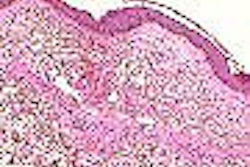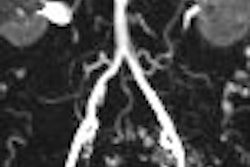Dear AuntMinnie Member,
When reports began surfacing last year of patient reactions to gadolinium MRI contrast, the imaging community was baffled. A strange disease called nephrogenic systemic fibrosis (NSF) had developed in a number of patients with kidney disease who had received large doses of gadolinium contrast during MRI studies.
Now, nearly a year later, the imaging community is just beginning to get a handle on this mysterious phenomenon that can be fatal in a few rare instances. How and why NSF develops is the subject of a new article we're featuring this week in our MRI Digital Community.
In the story, contributing writer Sydney Schuster explores all angles of the gadolinium/NSF connection. The article reviews the recent literature published on the topic, and provides a theory for explaining the biochemical process by which gadolinium may contribute to NSF.
Should imaging professionals start to limit their use of gadolinium-based agents? Caution is always the best approach, especially in patients with moderate to severe renal failure. But some imaging experts point out that gadolinium contrast has been used in millions of MRI studies, while the number of known NSF cases remains in the hundreds.
Get the rest of the story by clicking here, or visit our MRI Digital Community at mri.auntminnie.com.


.fFmgij6Hin.png?auto=compress%2Cformat&fit=crop&h=100&q=70&w=100)





.fFmgij6Hin.png?auto=compress%2Cformat&fit=crop&h=167&q=70&w=250)











